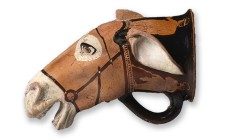Fractured oversight: The ABCs of cultural heritage in Palestine after the Oslo Accords
Kersel, M.M. (2015), ‘Fractured oversight: The ABCs of cultural heritage in Palestine after the Oslo Accords’, Journal of Social Archaeology 15(1): 24–44.
Palestine is a state in limbo—they lack full formal recognition as a sovereign land but possess a unique nation-state status that incorporates elements of a unified national consciousness and basic civil institutions albeit with limited autonomy. Palestine’s ambiguous political status is starkly illustrated by its convoluted territorial control, and nowhere is this more clearly attested than in the jurisdiction of archaeological sites and the display of artifacts in museums. The legislative colonial legacies of the Ottoman, the British Mandate, the Jordanians, the Egyptians, Israeli military orders, and the 1995 Oslo II Accords, which carved the Occupied Territories into a complex mosaic of areas—A, B, and C—have resulted in fractured oversight of heritage sites and objects. A case study focused on Herodium provides a fascinating lens for examining the efficacy of law and the administration of archaeological and object management in a contested landscape.
